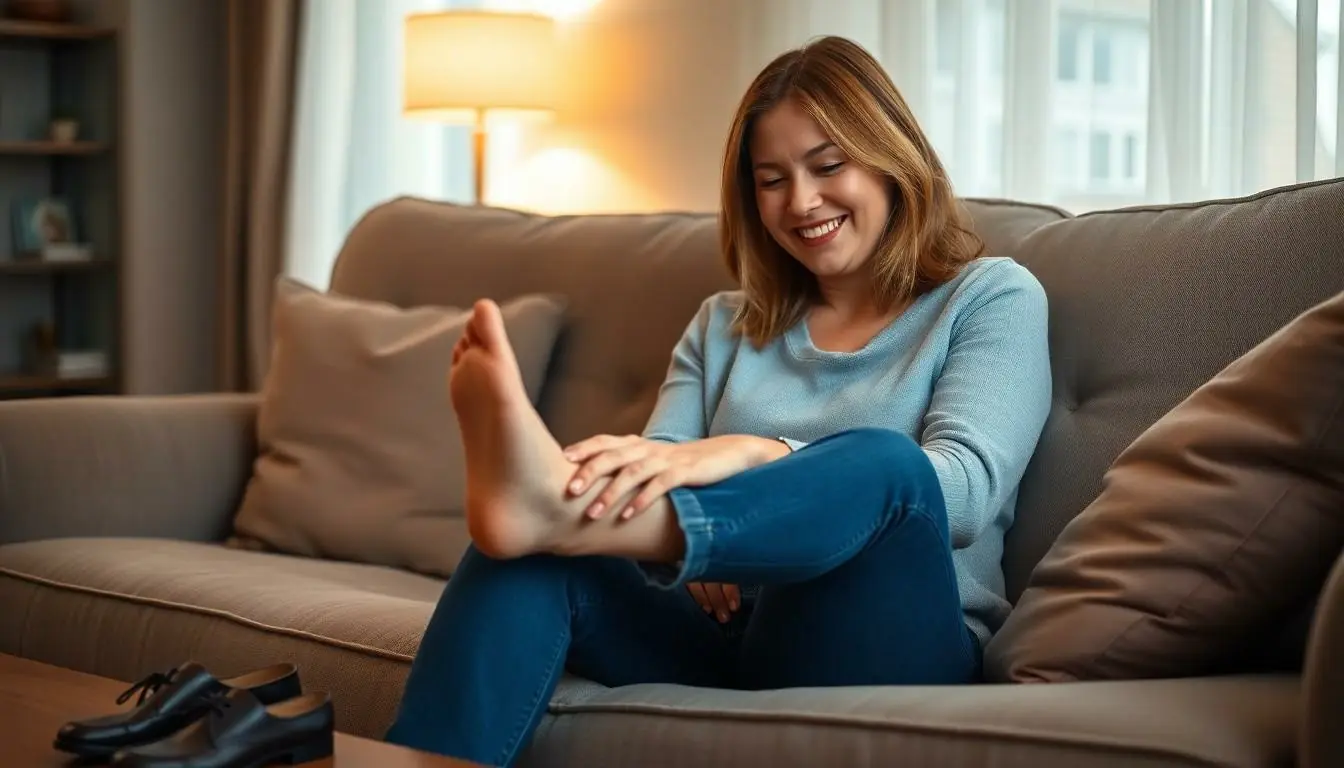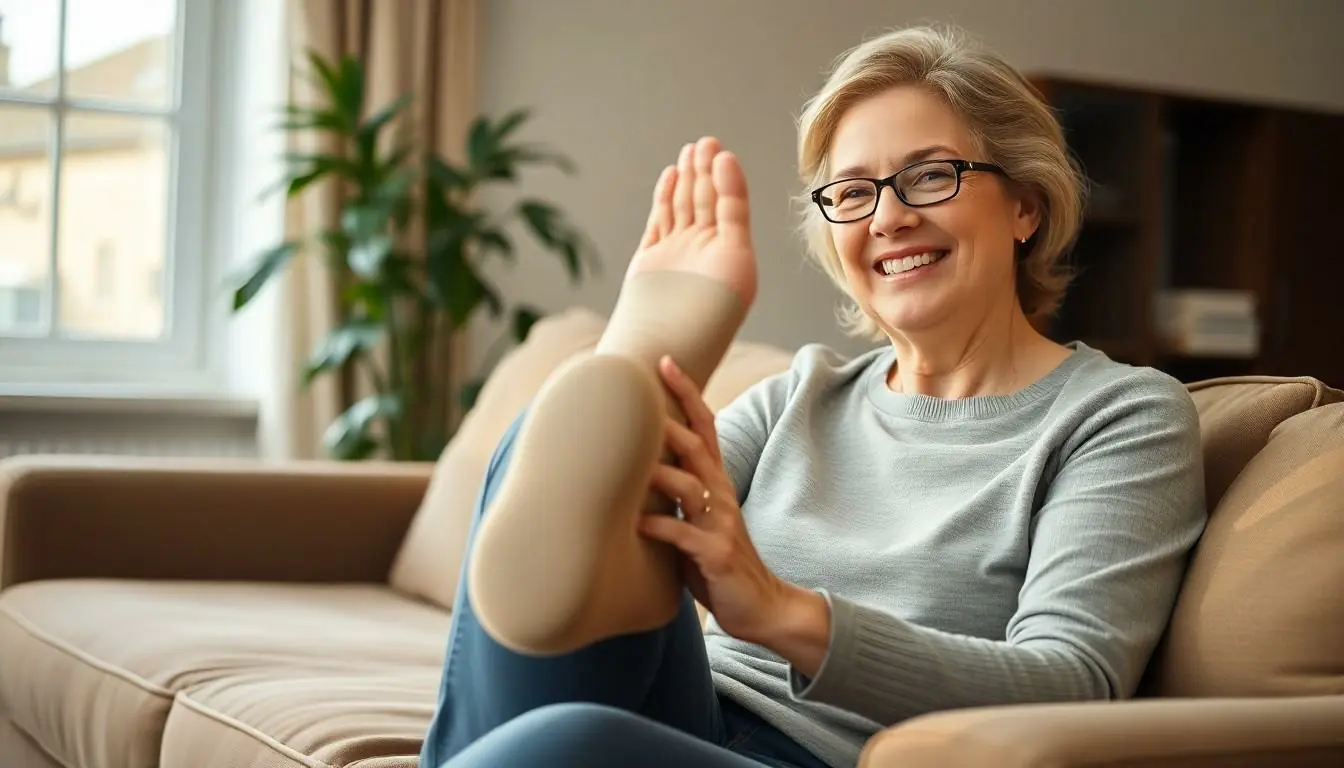Hammer toe might sound like a quirky name for a new workout trend, but it’s actually a common foot condition that can leave anyone feeling like they’re walking on Lego bricks. If you’ve ever found yourself wincing at the thought of slipping on your favorite pair of shoes, you’re not alone. This little toe trouble can turn a simple stroll into an awkward shuffle, but fear not!
With the right self-care strategies, it’s possible to reclaim comfort and style. From simple stretches to clever footwear choices, there are plenty of ways to keep those toes happy and healthy. Let’s dive into some practical tips that’ll not only ease the discomfort but might even make you chuckle along the way. After all, who knew managing hammer toe could be both effective and entertaining?
Table of Contents
ToggleUnderstanding Hammer Toe
Hammer toe affects the toe muscles and tendons, leading to a bent appearance. This condition often causes discomfort during walking or when wearing shoes.
What Is Hammer Toe?
Hammer toe refers to a deformity in which a toe bends downward at the middle joint, creating a hammer-like shape. This condition primarily affects the second, third, or fourth toes. Symptoms may include pain, swelling, or stiffness in the affected toe. Diagnosis typically occurs through physical examination by a healthcare professional.
Causes and Risk Factors
Several factors contribute to the development of hammer toe. Ill-fitting footwear, especially high heels or narrow shoes, increases the likelihood of this condition. Other causes include muscle imbalances, arthritis, or a history of toe injuries. Genetics can play a role, as some familial traits predispose individuals to this issue. Age also influences the risk, with older adults experiencing this condition more frequently.
Importance of Hammer Toe Self-Care

Self-care plays a crucial role in managing hammer toe discomfort and preventing further complications. Strategies that promote toe health contribute significantly to overall foot well-being.
Benefits of Self-Care
Enhancing comfort ranks among the primary advantages of self-care for hammer toe. Regular practices can reduce pain and swelling while improving toe mobility. Maintaining flexibility in the affected toes leads to better gait and walking ease. Self-care also helps prevent worsening of the condition, reducing the need for medical intervention. Individuals often experience increased confidence in their footwear choices, enabling them to wear styles that were previously uncomfortable. Prioritizing these self-care methods fosters a proactive approach to foot health.
Common Self-Care Practices
Engaging in toe stretches constitutes an essential self-care practice. These stretches improve flexibility and strength, helping alleviate discomfort. Choosing appropriate footwear proves vital; shoes should provide proper support and ample room for toes. Utilizing orthotic devices offers additional cushioning and support for the arch and toes. Regular foot baths with Epsom salt can help soothe inflammation and soreness. Additionally, massaging the affected area promotes circulation and overall relaxation. Implementing these practices can significantly enhance daily comfort and mobility.
Effective Self-Care Techniques
Managing hammer toe requires effective self-care techniques. Addressing footwear choices, stretching exercises, and orthotic devices significantly impacts comfort and mobility.
Footwear Choices
Selecting the right footwear plays a crucial role in managing hammer toe. Comfortable shoes with adequate toe space prevent further deformity and reduce pain. Footwear should have a low heel and soft materials. Many find shoes with a wide toe box beneficial for reducing pressure on affected toes. Individuals should prioritize purchasing shoes that provide support and stability without cramping their toes. Avoiding high heels and narrow shoes helps to alleviate discomfort, allowing for better daily activity.
Stretching and Strengthening Exercises
Incorporating stretching and strengthening exercises into a routine helps improve toe flexibility and strength. Simple toe stretches, such as pulling the affected toe upwards, enhance mobility. Holding the stretch for 15-30 seconds and repeating several times daily can yield positive results. Strengthening exercises, like picking up small objects with toes, promote muscle balance. Regularly practicing these exercises alleviates stiffness, supports alignment, and ultimately reduces pain.
Use of Orthotic Devices
Utilizing orthotic devices offers additional support for those experiencing hammer toe. Custom or over-the-counter orthotics help align toes and provide cushioning for enhanced comfort. Many find that arch supports can reduce pressure on the toes and improve overall foot function. Toe caps or pads also protect corns and calluses, reducing friction while walking. Regular use of these devices significantly contributes to pain relief and improved mobility.
When to Seek Professional Help
Recognizing when to seek professional help for hammer toe is essential for effective management. Delaying treatment can lead to more severe complications.
Signs You Need Medical Attention
Experiencing persistent pain that doesn’t improve with home remedies indicates a need for medical evaluation. Swelling or redness in the affected toe might signal inflammation or infection. If loss of mobility occurs, such as the inability to straighten the toe, consulting a healthcare professional is important. Noticing changes in toe appearance, like worsening curvature, also warrants a visit. Symptoms like numbness or tingling can point to nerve issues that require prompt attention. Seeking guidance ensures appropriate treatment and prevents deterioration.
Managing hammer toe effectively requires a proactive approach to self-care. By incorporating simple yet effective strategies into daily routines, individuals can significantly reduce discomfort and enhance mobility. Prioritizing proper footwear and engaging in targeted exercises can make a world of difference.
It’s essential to listen to the body’s signals and adapt self-care practices as needed. Should symptoms persist or worsen, seeking professional advice is crucial. With the right balance of self-care and medical support, living comfortably with hammer toe is entirely achievable.




